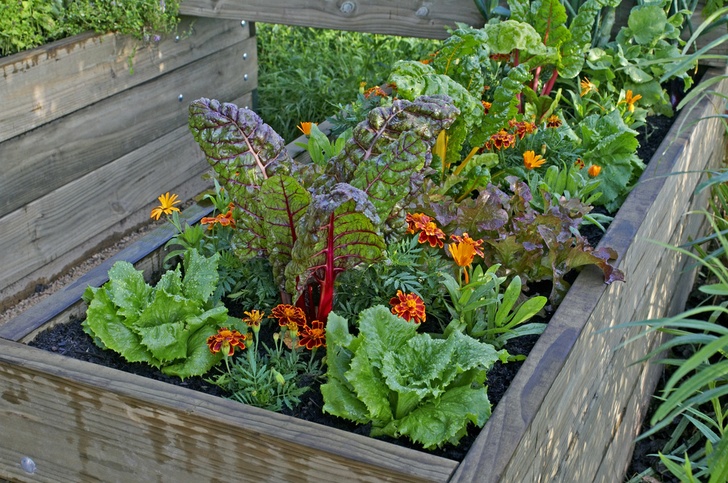
Growing vegetables in raised beds offer an opportunity for just about anyone to provide some food for their family.
Raised beds can either be created on the ground by piling up high-quality soil, compost, and other organic material or placed within a frame or container on the ground.
A wide variety of vegetables are quite happy in raised beds which is an added bonus to this type of growing. Many people feel that raised beds are the best way to garden.
7 Benefits of Raised Bed Gardening
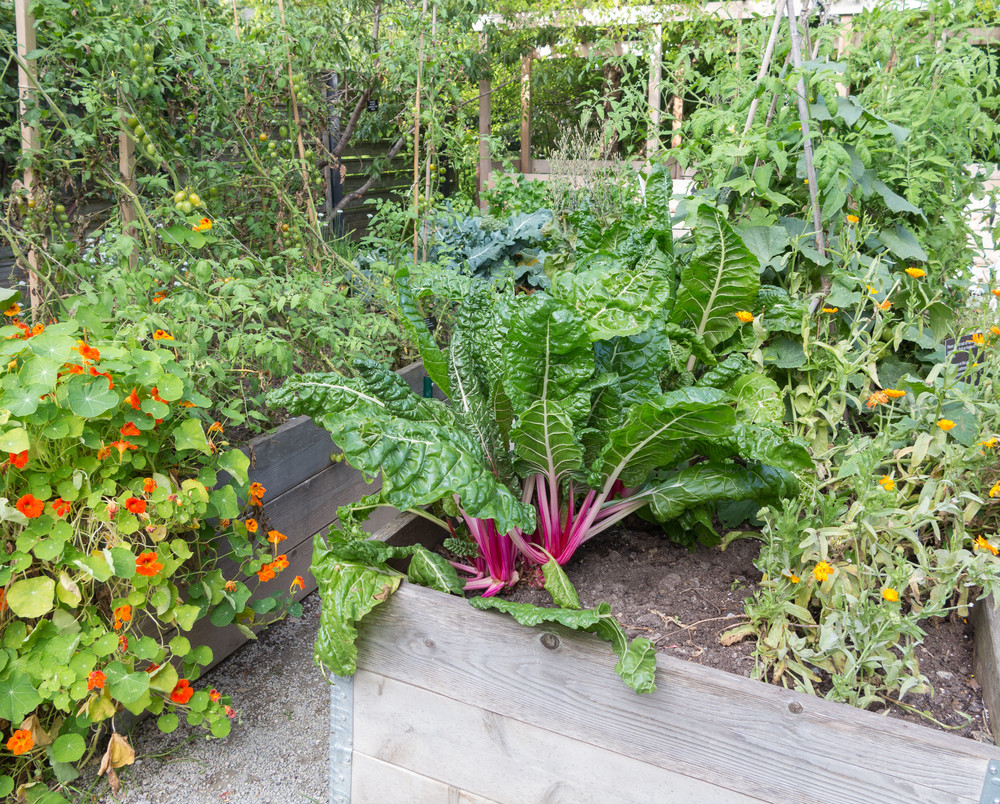
1. Raised beds are versatile
As mentioned above, raised beds offer a great deal of flexibility. Wherever a traditional garden can be put, a raised bed can also be put. You can also put a raised bed on a patio, rooftop or deck.
The versatility of raised beds makes it possible for many people to provide fresh food for their family whether they are in the city or the country. Raised beds can be built of any number of materials including wood, fabric, steel, or even crafted as an upcycled project.
2. Accessibility
Raised beds can be built to accommodate persons who have difficulty bending down or are in a wheelchair. This accessibility makes gardening possible for all people no matter their limitations.
3. Soil quality
When you garden in a raised bed you have much more control over soil quality then you do when you garden in a conventional manner. You can fill your raised bed with rich, organic material perfect for growing healthy plants.
In addition, not walking on the soil surrounding your garden will help keep it from becoming compacted.
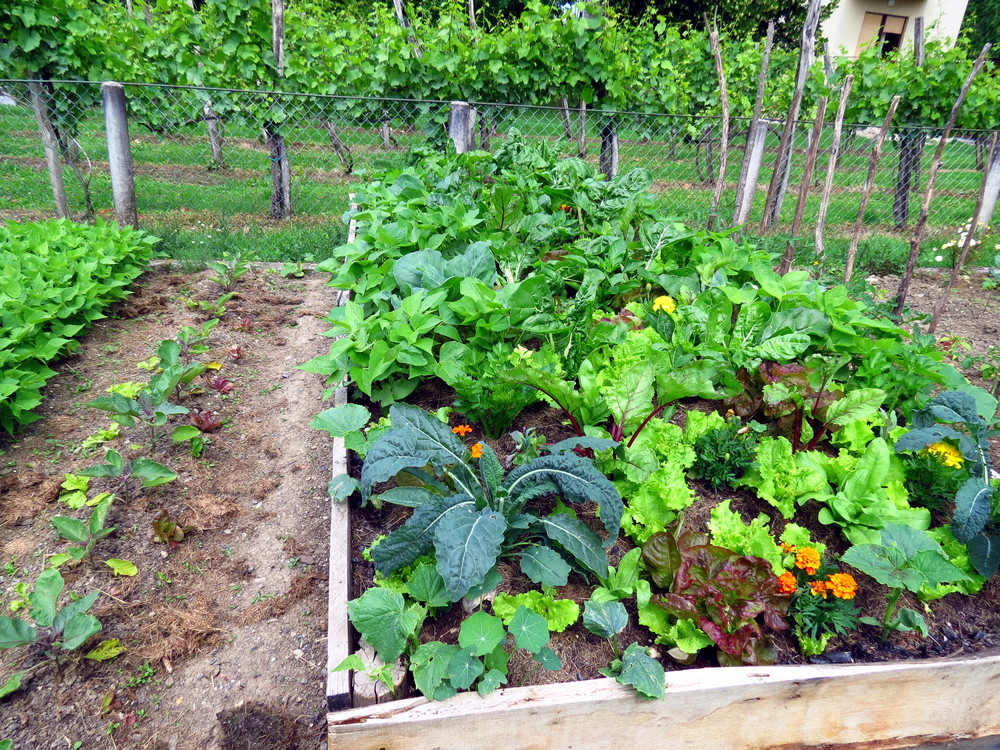
4. Soil temperature
The soil in a raised bed warms up faster than the ground. This means that you can get a jump start on early spring planting. Covering your raised bed with black plastic fabric prior to planting will allow the sun to further warm up the soil.
You can even convert your raised bed to a cold frame or hoop house where you can grow veggies very early, if not all year round, depending on where you live.
5. Pest control
Building a raised bed off of the ground can help keep certain pesky critters such as rabbits and groundhogs at bay. You can also add netting to your beds to keep birds from munching.
Furthermore, higher quality soil generally means plants will have a stronger defense against common pests.
6. Bigger yield
When I made the switch from a conventional garden to raised beds I saw an incredible increase in the size of my harvest. It is predicted that you can grow up to 10 times the amount of produce in the same space raised beds.
7. Maintenance
It is so much easier to keep a raised bed weed free than a conventional garden. There is no need for a big hoe, a simple gardening fork or even just your hands can do the trick to keep your garden space weed free.
Set up a drip irrigation system for your raised beds and keeping plants evenly moist becomes super easy.
How To Choose The Best Veggies to Grow in Raised Beds
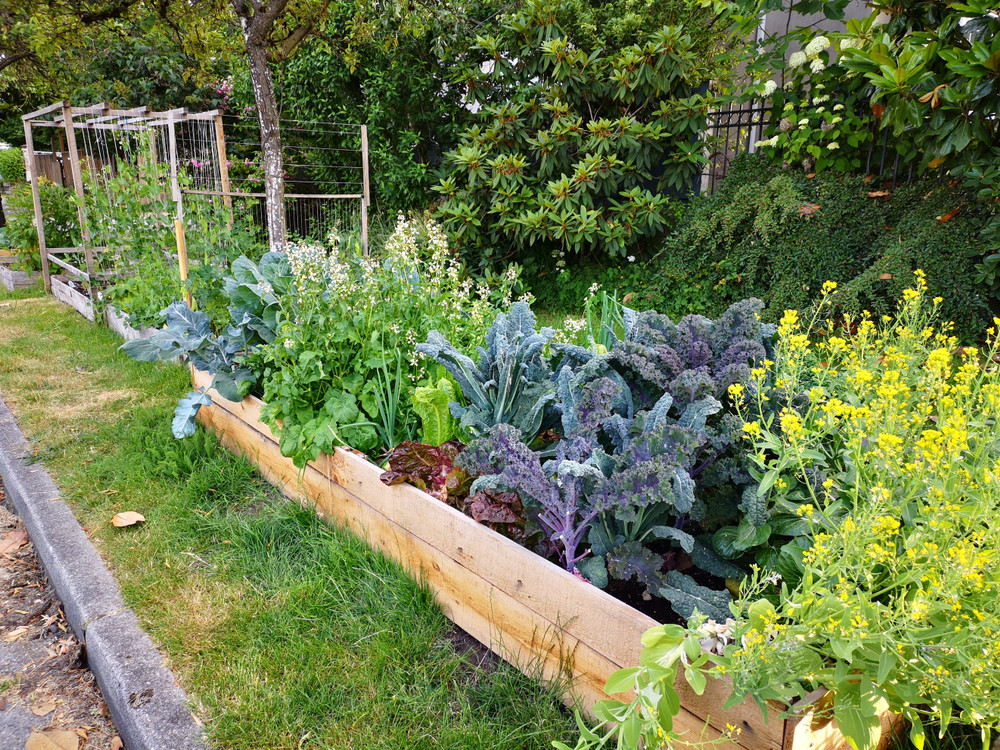
When growing in a smaller space keep these tips in mind when choosing what you will plant:
Grow what you like:
First and foremost, you should grow crops that you like to eat. For instance, if you don’t like tomatoes, don’t grow tomatoes.
Plant what is pricey:
Once you have determined what you like to eat think about growing veggies that cost more in the store. This will help to keep your food budget low.
Plant cut and come again crops:
These are the crops that keep giving all season long such as greens, green beans, and peas. Here’s a full list.
Grow something different:
Grow something that you enjoy but is unique and hard to find in the supermarket.
6 Best Veggies to Grow in Raised Beds
Here are my favorite plants to grow in raised beds:
1. Shallots
Shallots are a member of the onion (Allium) family a subtler taste than onions. They do very well in compact gardening. When you plant one immature bulb it blossoms into four or five shallots.
Despite their small size, the health benefits of shallots are quite impressive. They can not only lower cholesterol but also lower blood pressure, balance blood sugar, improve circulation, aid in healthy digestion and provide a potent antifungal, antibacterial and antiviral benefits.
Some research has even shown that they can keep certain types of cancer from developing. Try caramelized shallots for a delicious treat.
2. Garlic
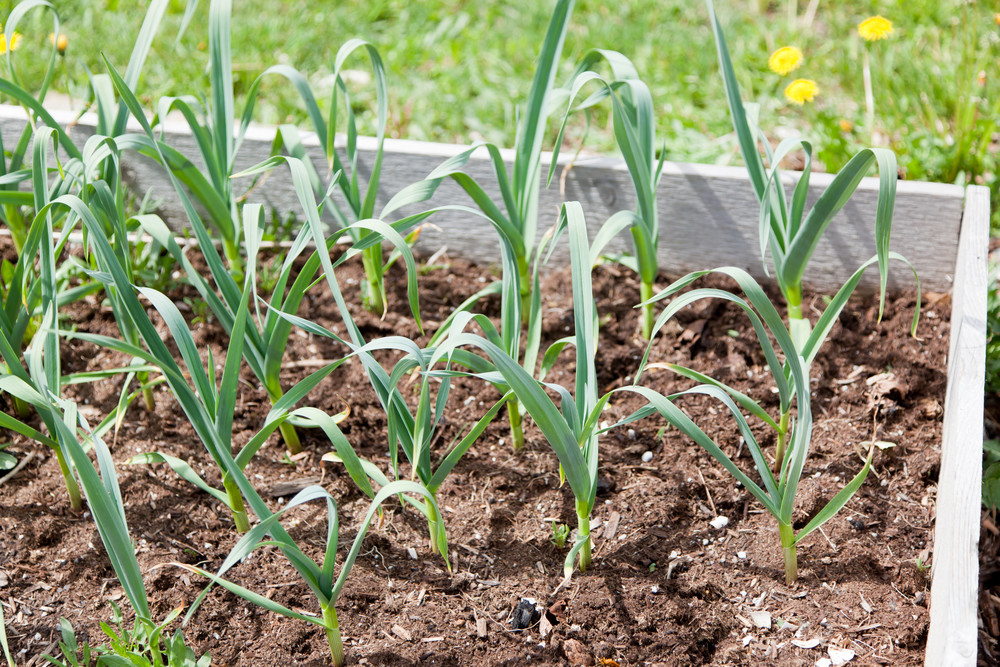
Garlic is also a member of the onion family. One planted clove results in a whole bulb of garlic.
Garlic is a potent flavor enhancer, has a number of medicinal benefits and is one of the easiest crops to grow in your garden.
3. Beets
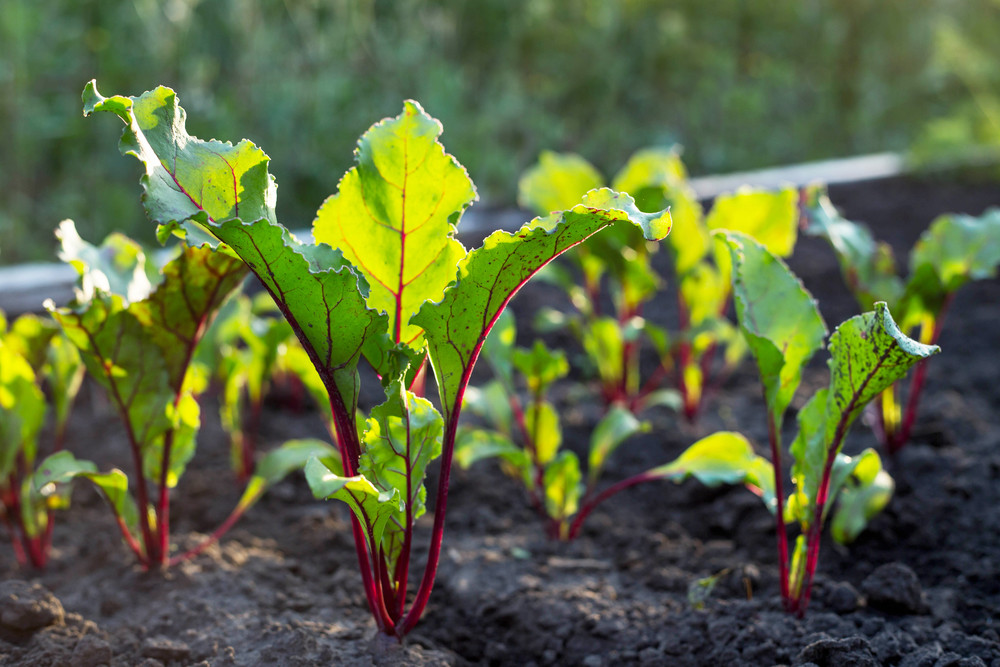
Beets are a tasty addition to a raised bed. They can even be grown all winter long in many southern states. Beets prefer cool weather and do best when planted early in the spring.
Beets do best when planted in raised beds that are 8 to 12 inches high. Beets also prefer sandy soil which you could put in your raised bed.
Beets are loaded with vitamin C which helps to keep your immune system strong. They also contain a good amount of potassium which is essential for healthy nerve and muscle function and manganese which helps your bones, kidneys, pancreas, and liver stay healthy.
Beets also keep your blood pressure regulated and help the body detox. The nice thing about beets is that you can harvest and eat both the beetroot itself as well as the beet greens which are packed with antioxidants. One of my favorite way to eat beets is to steam them and then fry them in a little bit of coconut oil and top with raw butter and sea salt.
4. Cherry Tomatoes
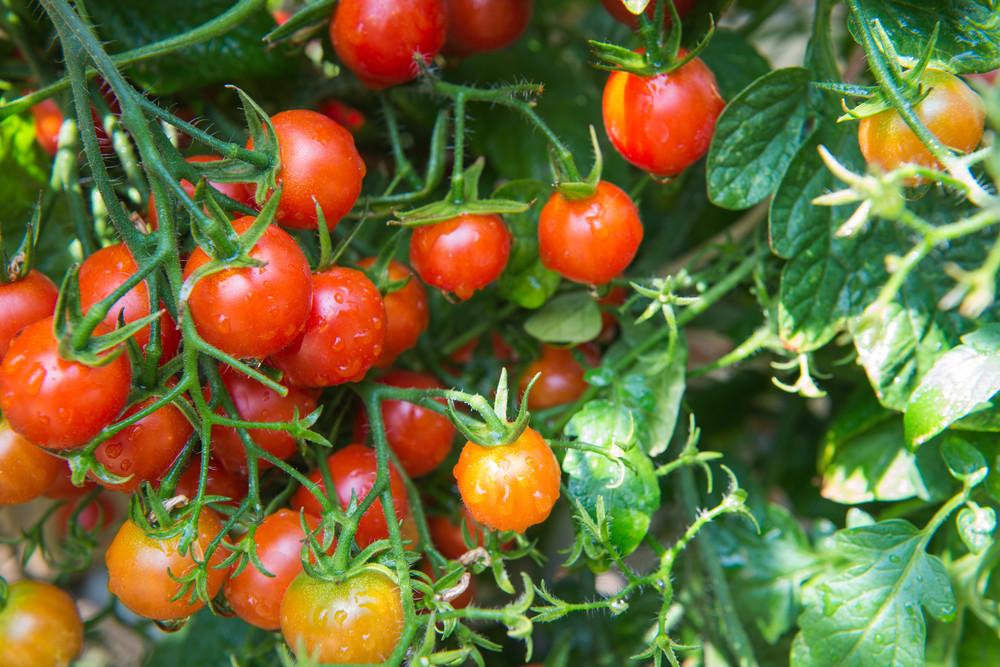
Cherry tomatoes add beautiful color and interest to a raised bed. They are so versatile that they will thrive in a hanging basket or intertwined with other veggies such as onions, peppers, and lettuce.
Stake your tomato plants as soon as you get them into your bed and always remember to water tomato plants at the soil level, not from above.
Pinch off suckers early to keep the plant under control and rotate your tomatoes between raised beds each year. This will help keep your tomatoes strong and pest free
5. Lettuce
Lettuce of all types thrive in the open soil environment of raised beds and containers. Lettuce grows well from seed sown directly into the bed or container – sometime in early March – depending on where you live.
As long as you give lettuce plenty of water, you can plant in a shallow container or raised bed. It grows quickly and is ideal to use in between peppers, tomatoes, eggplant, cauliflower, and broccoli.
Try loose leaf and butterhead varieties that you can cut and they come again. The powerful antioxidants in lettuce help to lower cholesterol levels, promote regular sleep, reduce inflammation, protect neurons and may prevent the onset of serious health conditions such as cancer.
6. Carrots
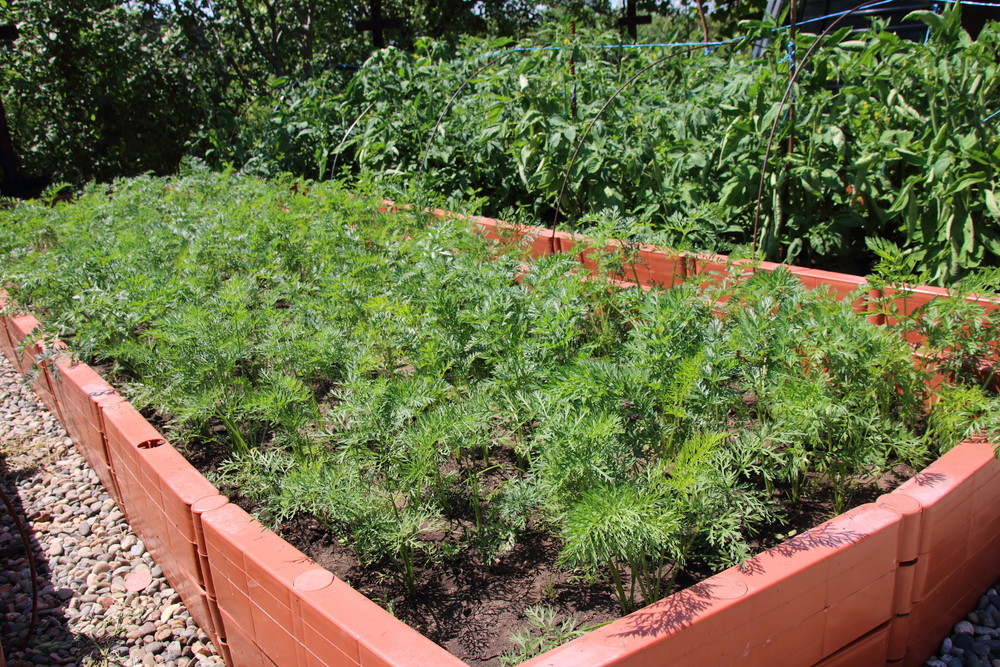
No raised bed would be complete without some carrots. Carrots grow better in raised beds where the soil is loose and there is adequate aeration.
A raised bed that is at least 12 inches deep is ideal for carrots with well-draining soil. They like a full day of sun but can grow well with 4 hours of hot sun.
Sow seeds 2 to 4 weeks before your last frost. If you live in warmer areas you can sow seeds again in the mid-summer for a fall harvest.
Some of my favorite carrot types to grow in raised beds include fast-maturing Amsterdam, Chantenay for their amazing flavor and Autumn King because they store well over winter.
How To Build A Raised Bed
Raised beds can be built out of a number of materials, including wood, concrete, bricks and cinderblock. You can even create a raised bed using an old bathtub or an upturned dresser.
If you’d like to try building your own raised bed at home, then below are some of the sleekest and easiest to build designs.
Read Next: 20 Unique Raised Garden Bed Ideas
Ready Made Raised Bed Kits
If DIY is not your thing, then you could also choose to buy a number of easy-to-assemble raised bed kits. These range in price from $30 to many thousands of dollars depending on what features you’d like.
Below are four of the best raised bed kits for all price ranges.
